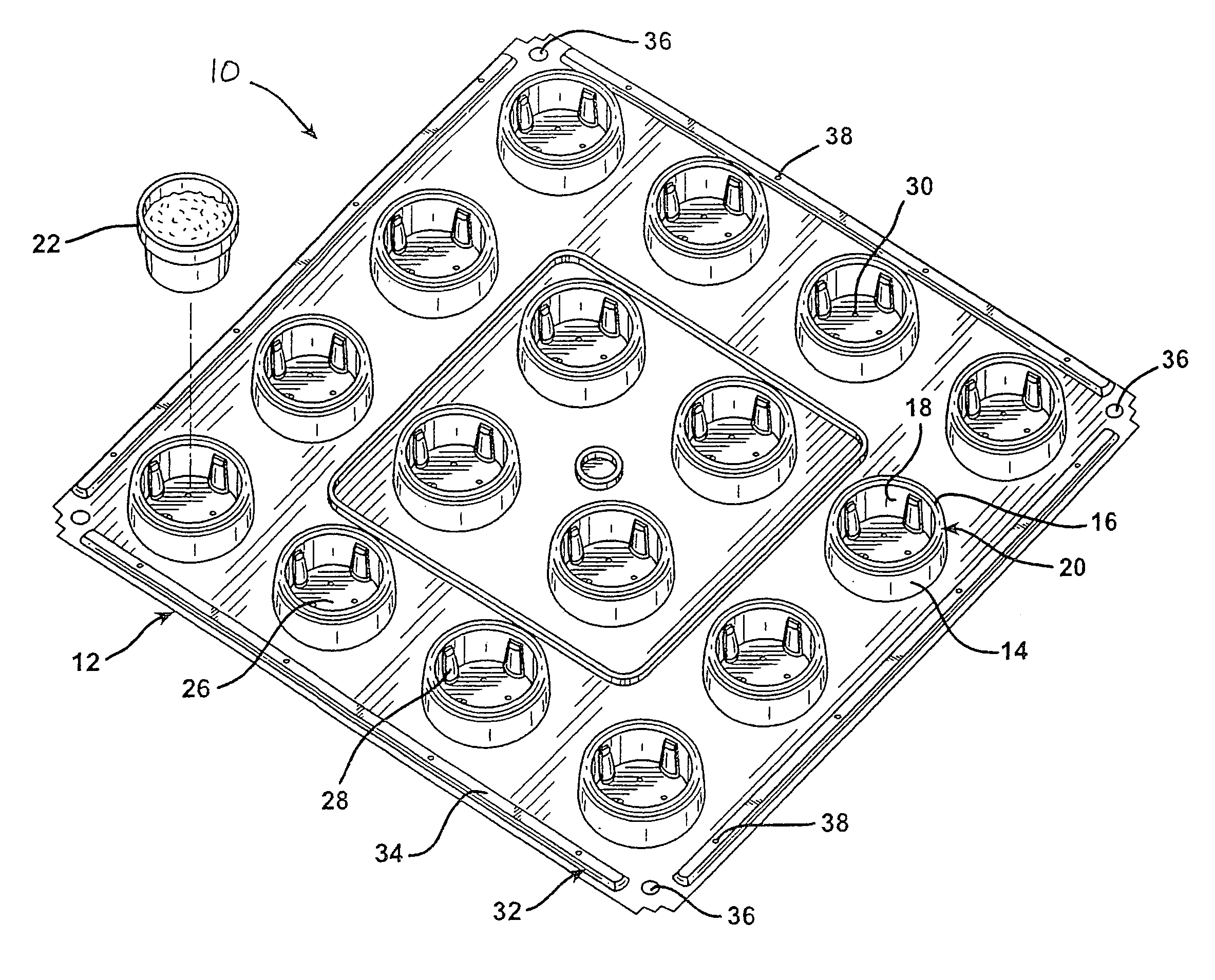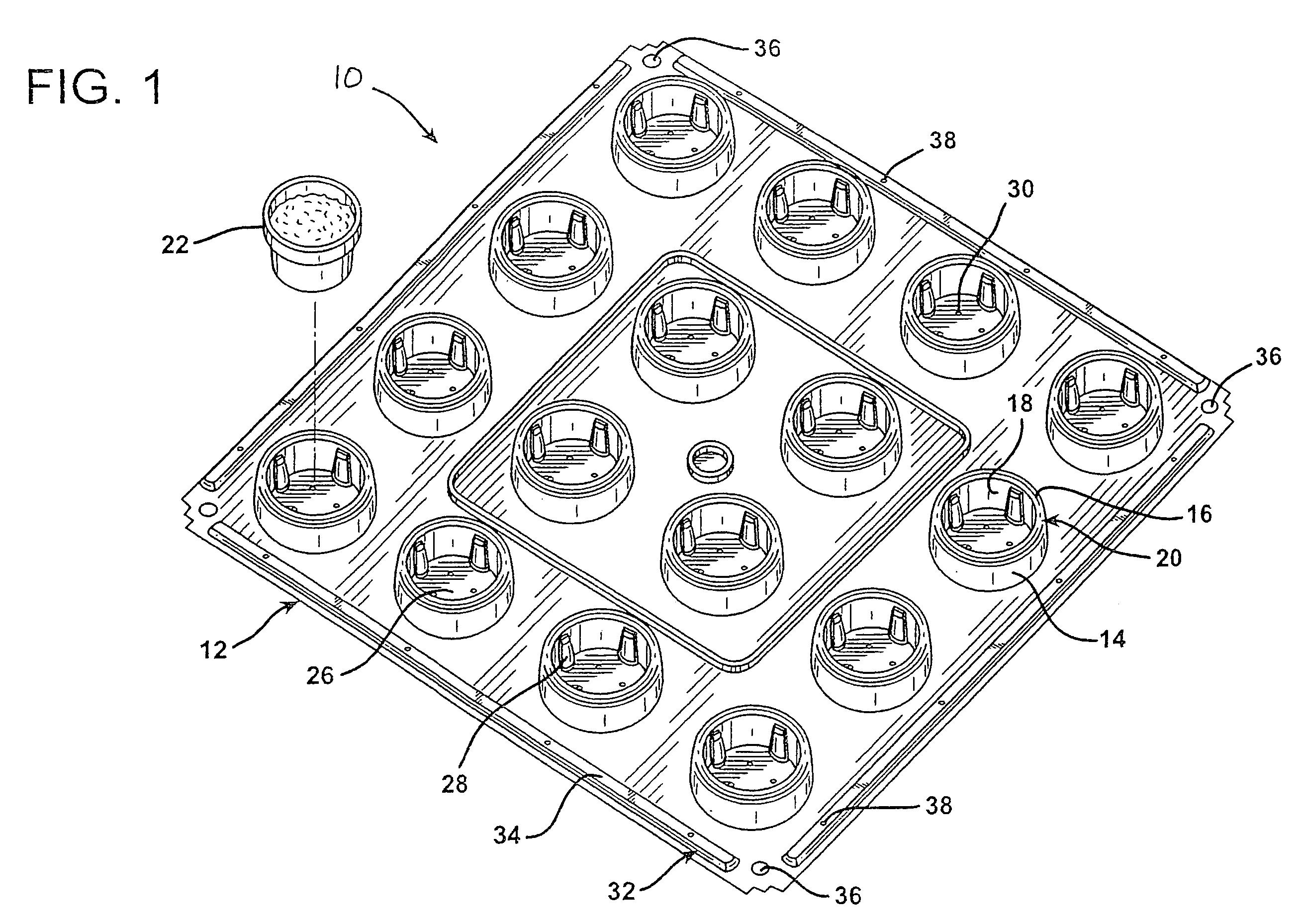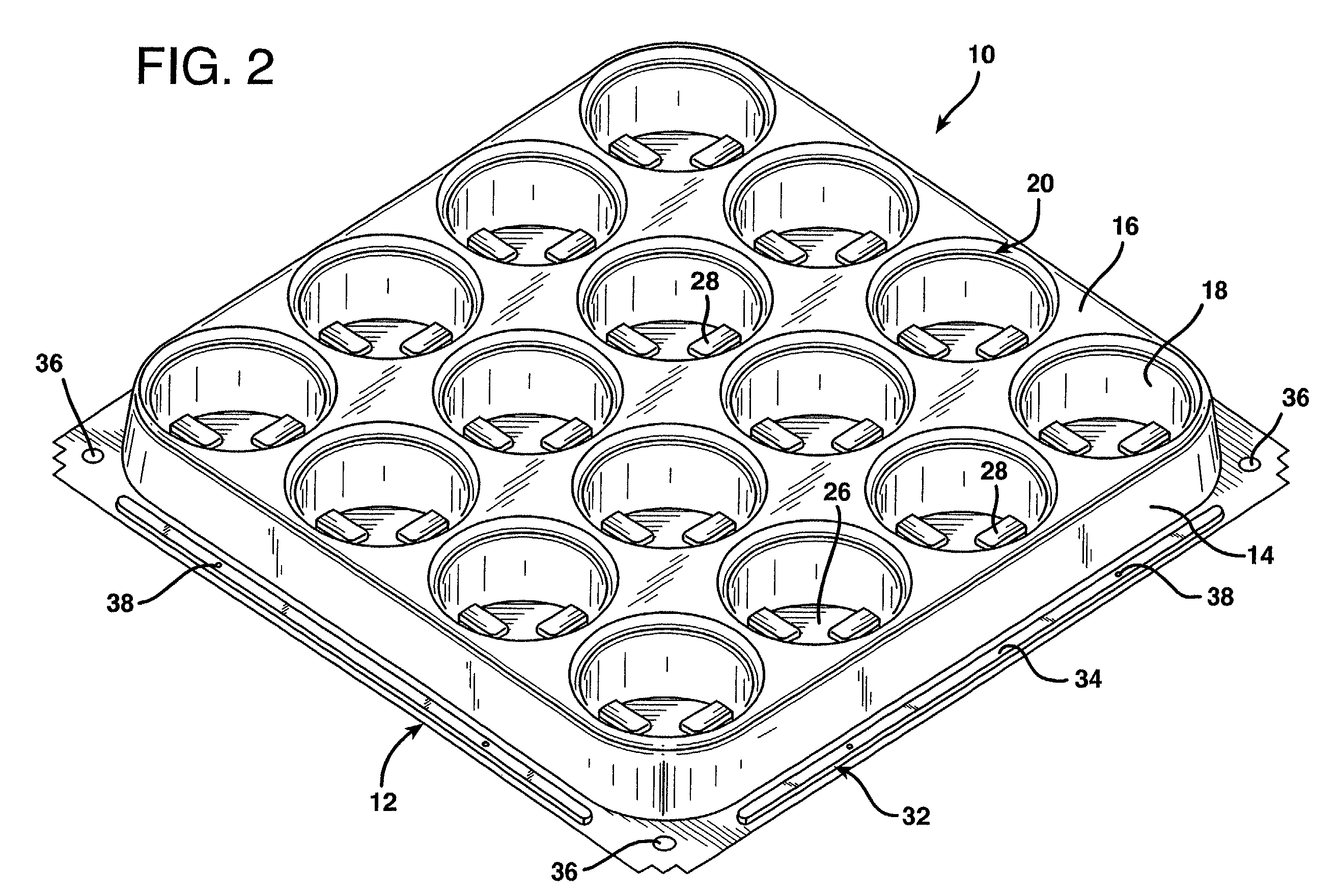Support system for potted plants
a technology for supporting systems and plants, applied in the field of plants, can solve the problems of increasing labor costs, affecting the growth of plants, and affecting the safety of plants, so as to prevent inadvertent displacement of trays and reduce the time and labor
- Summary
- Abstract
- Description
- Claims
- Application Information
AI Technical Summary
Benefits of technology
Problems solved by technology
Method used
Image
Examples
Embodiment Construction
[0025]Referring to FIGS. 1 and 2, the support system 10 for potted plants of the present invention comprises a tray 12 having at least one outer wall 14, a transitioning surface 16, and at least one inner wall 18. The inner wall 18 defines a sidewall of a receptacle 20 adapted to receive a plant pot 22. An interstitial space 24 (see FIG. 3) between the outer wall 14 and inner wall 18 is maintained for receiving an insulating substance. It will be appreciated that the insulating substance of choice may be determined by the degree of insulation to be provided. For example, air may be used as the insulating substance. In a situation where a greater degree of insulation is desired, a solid insulator such as, for example, a fiberglass-based insulation may be included. Those of skill in the art will realize that this feature allows the support system 10 to be used to store and display plants in less that optimum climatic conditions, such as in extremes of heat and cold.
[0026]It will also ...
PUM
 Login to View More
Login to View More Abstract
Description
Claims
Application Information
 Login to View More
Login to View More - R&D
- Intellectual Property
- Life Sciences
- Materials
- Tech Scout
- Unparalleled Data Quality
- Higher Quality Content
- 60% Fewer Hallucinations
Browse by: Latest US Patents, China's latest patents, Technical Efficacy Thesaurus, Application Domain, Technology Topic, Popular Technical Reports.
© 2025 PatSnap. All rights reserved.Legal|Privacy policy|Modern Slavery Act Transparency Statement|Sitemap|About US| Contact US: help@patsnap.com



